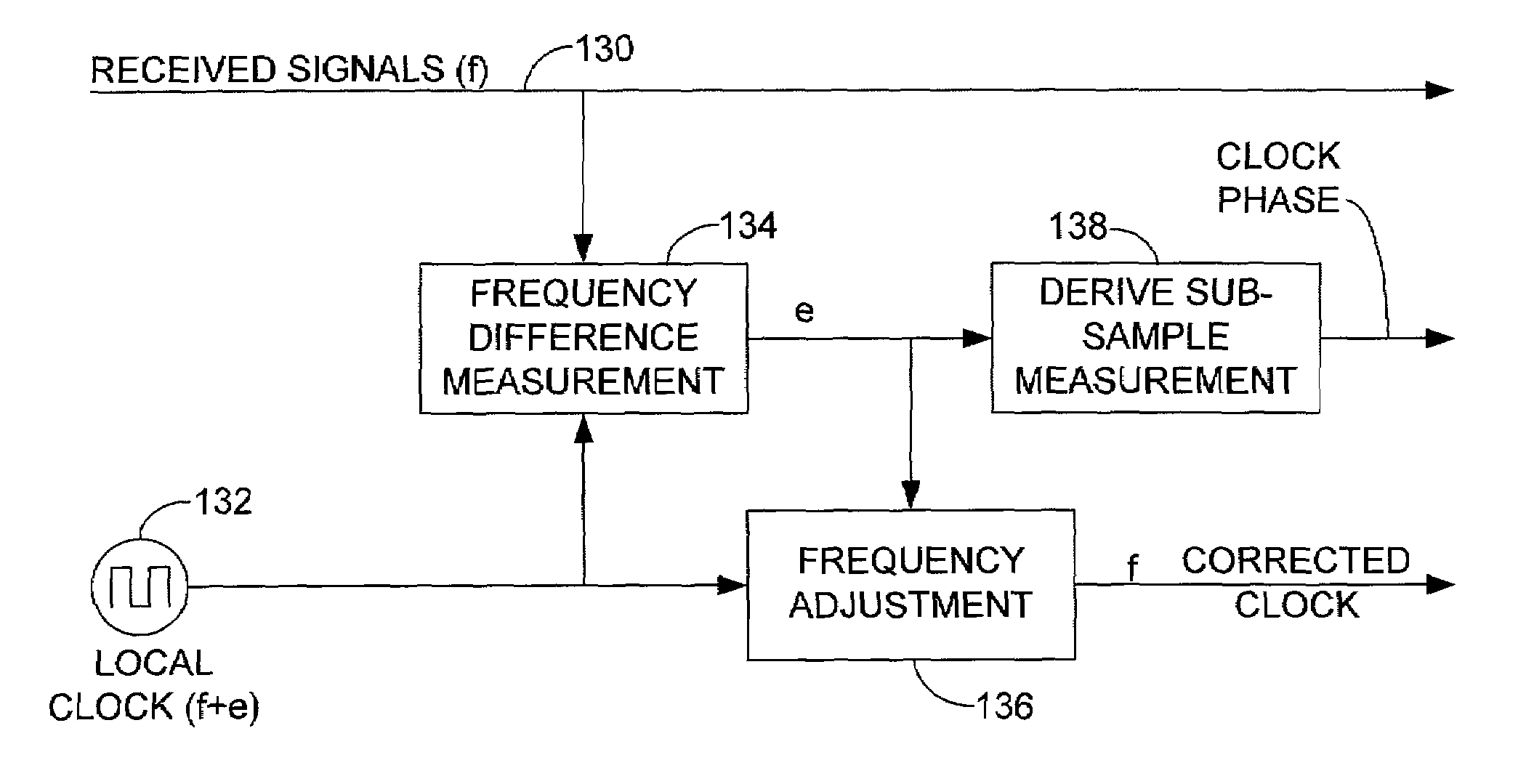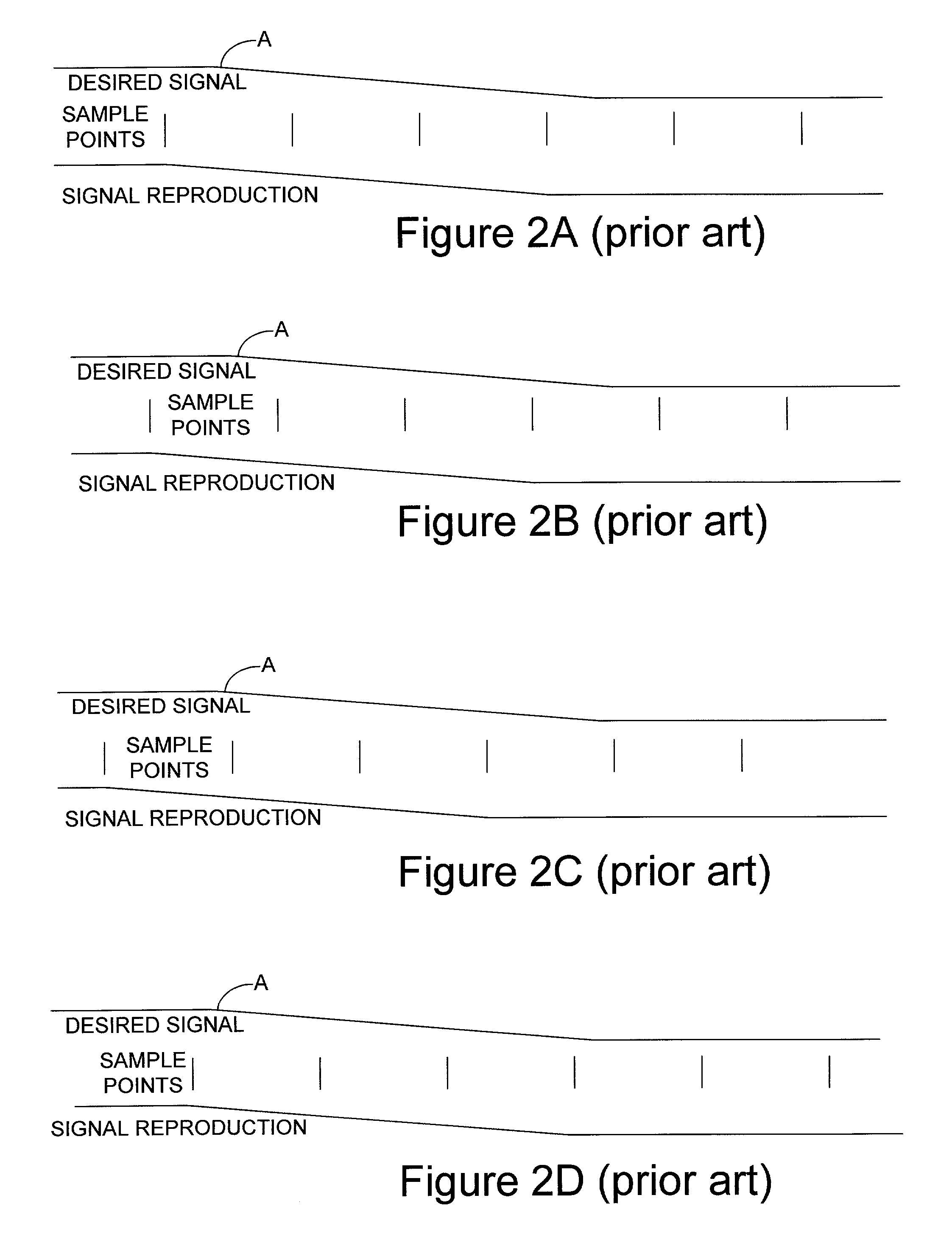Method and apparatus for processing digitally sampled signals at a resolution finer than that of a sampling clock
a sampling clock and digital signal technology, applied in pulse technique, navigation instruments, instruments, etc., can solve the problems of inability to perfectly synchronize, receiver clocks in general not as accurate as satellite clocks, and inherent time error in distance measurements, so as to facilitate synchronization with received signals and mitigate multipath effects
- Summary
- Abstract
- Description
- Claims
- Application Information
AI Technical Summary
Benefits of technology
Problems solved by technology
Method used
Image
Examples
Embodiment Construction
[0037]As shown in the drawings for purposes of illustration, the present invention pertains to a method and apparatus for reproducing a desired periodic signal event, such as a signal waveform or a desired signal time window, without being limited in temporal resolution by a digital sampling interval and without being limited to a small number of specific signal magnitudes. As briefly described above, the accuracy of reproduction of signal events and sampling windows is limited by the use of a digital sampling interval. This limitation will now be described further with reference to the drawings.
[0038]FIGS. 1A–1D depict how a periodic digital event may be represented or reproduced using digital sampling. In each of the figures, the upper waveform is the desired signal event to reproduce and the lower waveform is the reproduced signal. The event in this case is a digital transition from a high level to a lower level. In between the upper and lower waveforms, short vertical lines repr...
PUM
 Login to View More
Login to View More Abstract
Description
Claims
Application Information
 Login to View More
Login to View More - R&D
- Intellectual Property
- Life Sciences
- Materials
- Tech Scout
- Unparalleled Data Quality
- Higher Quality Content
- 60% Fewer Hallucinations
Browse by: Latest US Patents, China's latest patents, Technical Efficacy Thesaurus, Application Domain, Technology Topic, Popular Technical Reports.
© 2025 PatSnap. All rights reserved.Legal|Privacy policy|Modern Slavery Act Transparency Statement|Sitemap|About US| Contact US: help@patsnap.com



